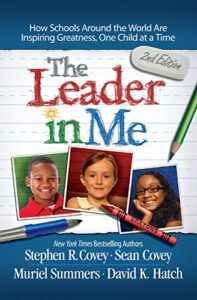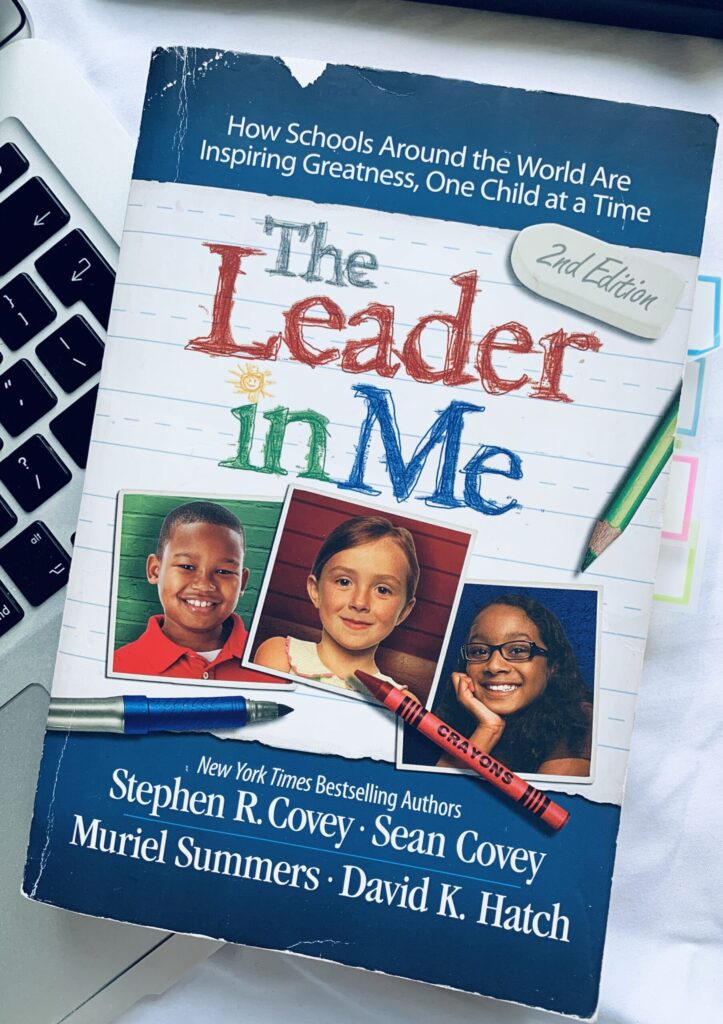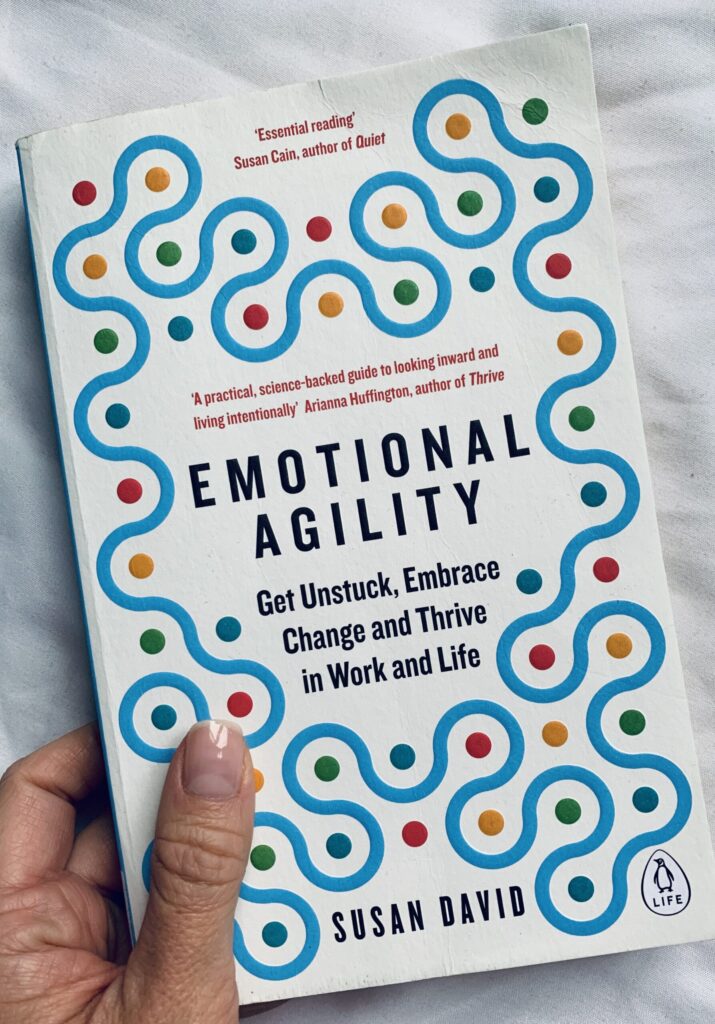 The Leader in Me. Book Summary
The Leader in Me. Book Summary
How Schools Around the World Are Inspiring Greatness, One Child at a Time
Stephen Covey
Simon & Schuster; 2nd edition (19 Aug. 2014)
About the author
Stephen Richards Covey (October 24, 1932 – July 16, 2012) was an American educator, author, businessman, and keynote speaker. Stephen Covey was co-founder and vice-chairman of Franklin Covey, the global professional services firm. In 1985 he founded the Covey Leadership Centre – now part of FranklinCovey – and the Institute for Principle Centred Leadership in Utah. Born in 1932, he gained an MBA from Harvard Business School and a doctorate from Brigham Young University, where he was subsequently Professor of Organizational Behaviour and Business Management. At the Covey Leadership Centre, through his writing – chiefly The Seven Habits of Highly Effective People published in 1989 (which has sold over 25 million copies) – and through consultancy (he was invited to Camp David by President Clinton), his message has reached millions of individuals in business, government and education. In 1996, Time magazine named him one of the 25 most influential people. A father of nine and a grandfather of fifty-five, he received the Fatherhood Award from the National Fatherhood Initiative in 2003.
About the book:
“Over the years, the field of education has developed laserlike abilities to identify students’ academic deficits so that proper remedies can be prescribed. Behavioral experts have created sophisticated systems for categorizing all types of defiant or disturbing student behaviour so we can accurately identify and cure what ails them. Similar tools and tactics have been designed to measure and critique teachers’ performances to increase their effectiveness. Indeed we have become quite adept at identifying “what is wrong” with students, adults, and schools – all with good reason and noble intent.
Such strategies and tools have their benefits. But in our pursuit to improve students’ GPAs, have we perhaps become overfocused on students’ GPAs (short for, Got a Pain)? In trying to improve teacher performance, have we turned into nothing more than a panel of critics in constant search of their “wrongs” so we can “right” them? Has the field of education become only about “remedying deficits”? Could anything be gained from stepping back, as Seligman did, to test the value of “identifying and amplifying [students’ and adults’] strengths and virtues, and helping them find the niche where they can live these positive traits to the fullest”? Is there value in nurturing future-mindedness, hope, interpersonal skills, courage, the capacity for flow, optimism, and work ethic?
These and other questions have been on our minds as we approached this work.”
You’ve probably heard of Stephen R. Covey’s The 7 Habits of Highly Effective People. Or you’ve also read his other book, The 7 Habits of Highly Effective Families. Well, The Leader in Me takes those habits and shows us how to use them at school. And as the subtitle suggests, it’s all about “How schools around the world are inspiring greatness, one child at a time.”
What caught my attention? Well, Covey’s ideas align with some of my other favourites, like Daniel Goleman’s Emotional Intelligence, where he argues that EQ is often more important than IQ. Sir Ken Robinson’s Creative Schools tells us what’s wrong with our current education system and how we can fix it to help children unleash their full potential. Martin Seligman’s The Optimistic Child helps us teach kids to be more optimistic and resilient to flourish in life.
And many other eminent scientists and thought leaders, like Madeline Levine, Paul Tough, Carol Dweck, and more, all agree: school isn’t just about books and tests; it’s also about teaching kids how to live a happy and productive life.
I must say, some people online say The Leader in Me is just a big ad for an expensive program. But you know what? I found it to be a handy guide. It offers a powerful framework for parents, educators, and anyone involved in the upbringing of children to nurture leadership skills, instil timeless values, and foster a sense of personal responsibility from an early age.
So, let’s dive straight into our favourite ideas.
Key insights:
Leadership skills for life
“While leadership can be defined in many ways […], the definition that takes center stage in The Leader in Me, particularly as it applies to leading others, is Dr. Covey’s favorite:
Leadership is communicating a person’s worth and potential so clearly that they are inspired to see it in themselves.
Imagine what would happen in a school if everyone – every leader – led by that definition. That is why it is at the heart of The Leader in Me.
Clearly, the ultimate end in mind in working with students is not academics, school culture, or leadership skills. Those are all means. The ultimate end in mind is for students to develop the skills and mindsets that will allow them to lead their own lives, to be able to work effectively with others throughout life, and to make a meaningful contribution wherever they go in life – at home, at school, at work, at play. We want them equipped to make effective decisions today and into their futures.”
Yes, yes and yes. I totally agree with Dr. Covey on that. The world needs great leaders!
And the best thing is that EVERY child can ignite a leader inside right from the early years. By teaching kids the 7 Habits (“aka skills and mindsets”), we can also help them to be on top of their academic performance.
That leads us to the next insight.
A case for the seven habits
“One of Dr. Covey’s main discoveries was that the 7 Habits are based on timeless and universal principles. […]
Something else Dr. Covey discovered was that there is a practical sequence to the 7 Habits. The first three habits – Be Proactive, Begin with the End in Mind, and Put First Things First – help individuals to become more independent. They enable people to be more responsible, to take more control of their lives, to map out their future, to set priorities, and to achieve their goals by staying focused and disciplined. They include time management skills, planning skills, goal-setting skills, and other basic organizing skills that are foundational to independent living, or personal leadership. Doing them well leads to what Dr. Covey calls the Private Victory.
While becoming independent is important, neither business leaders nor parents see independence as the only “end in mind” for their employees or children. They want them to also be capable of working effectively with others. This is why the next three habits – Think Win-Win, Seek First to Understand, Then to be Understood, and Synergise – are so vital. They include skills for conflict resolution, listening, communicating, inspiring creativity, dealing with diversity, problem solving, and teamwork. They enable a person to become more interdependent, and culminate in Public Victory.
Habit 7, Sharpen the Saw, sustains and enhances the first six habits, and focuses on the principles of renewal, continuous improvement, and leading a balanced life. It gives guidance for maintaining the “whole person” by staying fit in four critical areas – physical, socio-emotional, mental, and spiritual – which are rooted in the four basic needs of individuals.”
These skills are not just a want; they’re a need, especially in the job market. And if you’re thinking about launching your own business, consider them your startup survival kit. Moreover, you need these skills to have healthy and meaningful relationships in your life. They are essential skills for our well-being.
But the issue is that our schools are still stuck in the dark ages, obsessing over test scores while these vital soft skills get left in the dust.
So, the 7 Habits is a great timeless framework for teaching kids these soft skills at home and school.
And guess what? Covey’s 7 Habits resonate a lot with the coping skills in Madeline Levine’s book ‘Teach Your Children Well‘ and the seven skills for success Paul Tough outlines in ‘How Children Succeed.’ Both authors share compelling research demonstrating how these soft skills lead to academic success and pave the way for lifelong flourishing.
Leadership culture produces leaders
“If students are taught effective habits but are then placed into a “defective” habitat (culture), one that is unfriendly, unsafe, or where they do not feel valued, they cannot be expected to fully develop their newly learned habits, or improve their academics. It is like taking a world-class seed, planting it in toxic soil, and expecting it to blossom to its full potential. It will not happen.
In contrast, miracles can happen when students are placed in a highly effective habitat […].”
If the aim is to raise thriving kids who reach their full potential, we’ve got to plant them in the right garden. Culture moulds us, and if we prepare future leaders, it starts with cultivating a great leadership culture.
In the book, Dr. Covey writes that schools can create a great leadership culture by focusing on three things:
1. The school environment:
- What is seen – wall posters, inspirational quotes, progress charts, art, etc
- What is heard – a common language (based on the seven habits)
- What is felt – if children feel safe, accepted, appreciated, understood and trusted, if they have a sense of vision, growth and achievement.
2. Shared leadership: “The best way for students to learn to be leaders is by seeing all adults modelling leadership – not just the principal – everyone.”
- Children are given leadership responsibilities
- Children’s opinions are valued
- Children get help in finding their voice
3. Leadership events:
- Assemblies – the primary goal is to reinforce the mission statement, celebrate leadership accomplishments, or share what is happening with the upcoming service project.
- Regular class meetings (“circle time”) where children celebrate success or the star student of the week, review rules, or work on an interesting project.
Corporate cultures are built on the same principles.
Question for you – how is your leadership culture (at home / school)?
It all starts with the paradigms
“Paradigms (how we see things) drive our behaviors (what we do, our habits), and what we do drives the results we get. If you want to make temporary, quick-fix improvements, work on changing bahaviors. If you want to make lasting, quantum leaps in schoolwide transformation, work on people’s paradigms.”
OK, let’s break this down. Covey talks about ‘paradigms,’ which are basically those deep-rooted ways of thinking that shape how we see the world. Others might call them ‘mindsets’ or ‘beliefs.’
Bottom line: if you want to change how people act, you’ve got to tackle these big mental shifts head-on.
Now, if you’re an educator – or a parent – on a mission to raise future leaders, Covey suggests to dive into these paradigm shifts:
- Leadership paradigm – leadership is not the same as management. You manage things but lead people.
- Working from the inside out – If you want to change how kids roll, start by working on yourself first. Lead by example.
- Every person is a leader – Don’t think leadership’s just for a lucky few. It’s a skill, and anyone can get better at it. John Maxwell, in his ‘The 21 Irrefutable Laws of Leadership‘, shares exactly the same idea. Teachers, parents, all of us need to actively seek out children’s opinions and help them find their voice.
- Release vs. control – it’s about being a coach rather than the “sage on the stage”. Focus on strengths instead of trying to fix every weakness.
- The whole child – Kids aren’t just test scores; they’re complex beings – body, mind, heart, and spirit. Treat them as such.
And yes, each of the seven habits also represents a paradigm shift.
A four-step process for achieving school goals
Teaching kids leadership and all those soft skills is fantastic, but let’s face it – schools are often obsessed with one thing: better test scores. And to make that happen, it’s not just about having the right mindset. You need a solid system and some tools to put those skills into action, day in and day out.
In the book, Covey outlines this four-step process that The Leader in Me schools put into action to tackle their big goals – and trust me, it’s not just for schools; it’s a great goal-setting system that anyone can use:
- Set Wildly Important Goals (WIGs): WIGs are the top-priority goals that, if you don’t hit them in time, they’ll cause a lot of pain. Two golden rules here – get the kids involved in setting these goals, and make sure they’re super specific.
- Translate goals into meaningful action steps: this step is all about breaking those big goals into actionable bits. You’re mapping out the specific tasks you need to tackle, the resources you’ll need, and the hurdles you’ve got to jump over (WOOP style).
- Keep scoreboards: Think of this as a progress report card. Establish how and how often you’re going to track the journey. For kids, it’s super important to see that they’re getting better over time. That’s how you foster that growth mindset – they’re not just checking boxes; they’re levelling up.
- Establish a cadence of accountability: This step is like having a buddy system. Set up regular ‘check-in’ sessions with a trusted person, like a teacher or a parent. During these meetings, discuss progress and figure out if any goals or action steps need tweaking. It’s also a chance to tackle any barriers along the way, whether that means getting extra help, finding a tutor, or simply changing the seating location.
Now, here’s the key thing – align the school’s WIGs with what’s happening in the classroom. That way, every student can set their very own WIGs, taking charge of their own journey to success.
Action steps for you:
- Lead by example: Be a role model for your children, whether at home or in school. Show them how to be a good leader by acting the way you want them to act. Your actions and words should match the qualities you want them to have.
- Provide opportunities for leadership and responsibility: Let your kids take charge of some things that match their age and abilities. They can help out at home, lead projects at school, or do community work. This helps them learn about leadership and being responsible.
- Create a leadership environment: Make your home or classroom a place where leadership can grow. Think about what your kids hear, see, and feel there. Encourage them to be kind, talk openly, and work together.
Quotes from the book:









